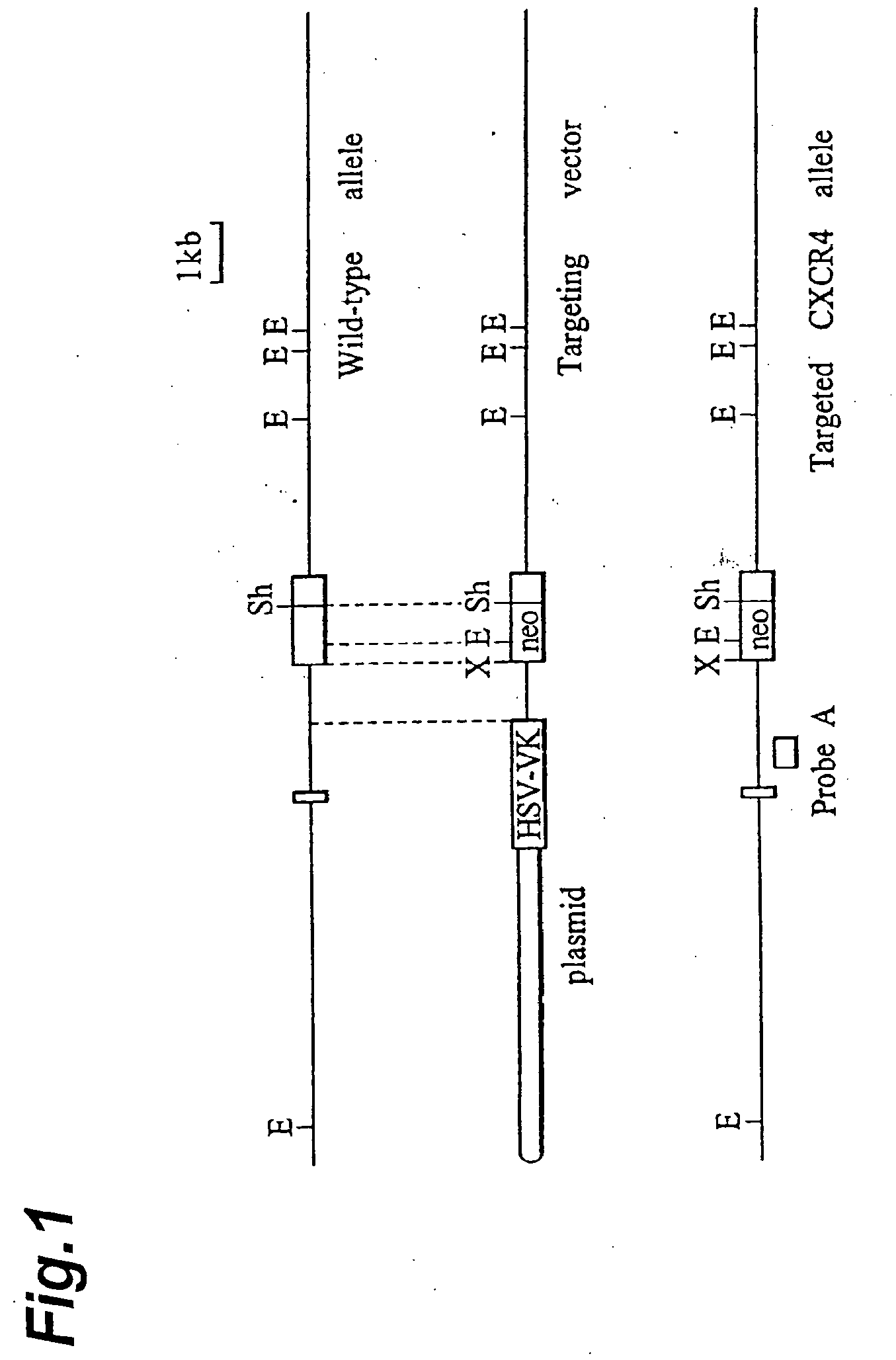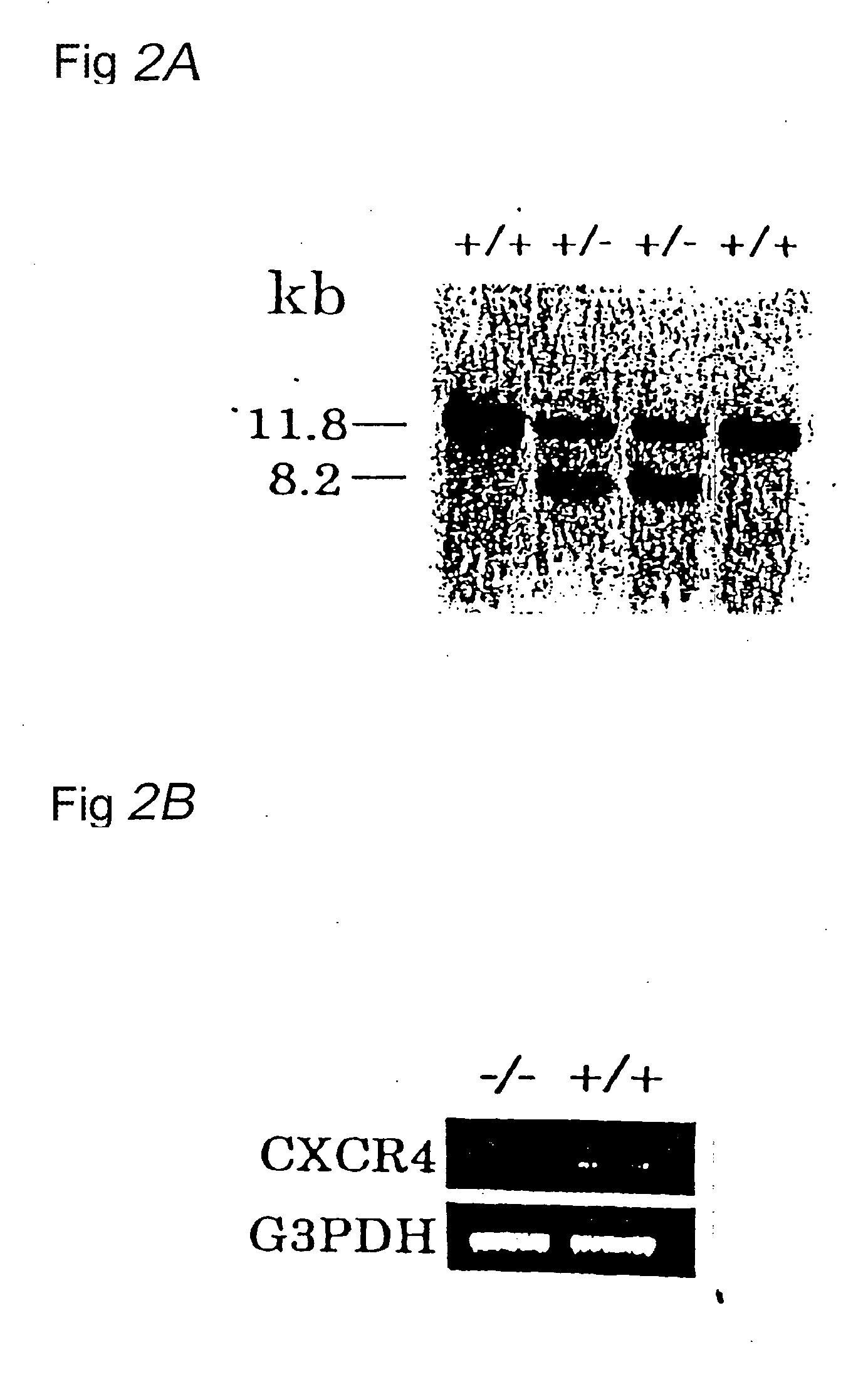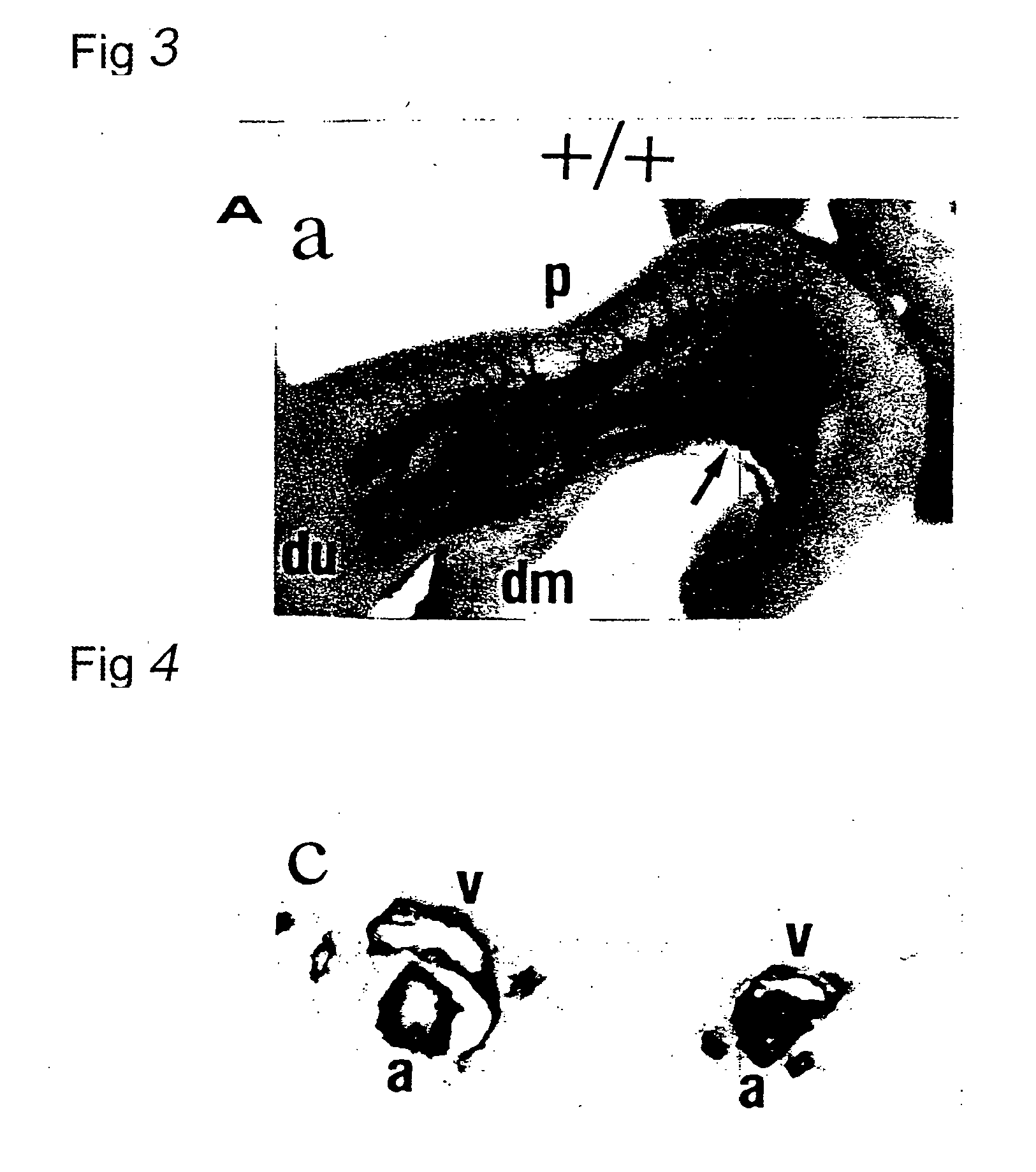Vascularization Inhibitors
a vascularization inhibitor and anti-solid cancer technology, applied in the direction of instruments, drug compositions, peptide/protein ingredients, etc., can solve the problems of unidentified substances responsible for vascularization during organogenesis, and achieve the effect of inhibiting the proliferation, invasion and metastasis of cancer
- Summary
- Abstract
- Description
- Claims
- Application Information
AI Technical Summary
Benefits of technology
Problems solved by technology
Method used
Image
Examples
examples
Creation and Analysis of Mice Completely Lacking CXCR4
[0112]Genome DNA containing the CXCR4 locus was isolated from a murine cell line 129DNA library (STRATAGENE).
[0113]A 1.1-kb genomic fragment containing the 5′-coding region of exon 2 was replaced by the neomycin resistant gene, and the herpes simplex thymidine kinase gene was linked to the 5′-terminus.
[0114]The targeting vector was introduced into the cells on day 14.1 of embryogenesis (referred to as “E14.1” hereafter) by electroporation, and a homologous recombination was selected by the use of G418 and ganciclovir and identified by PCR.
[0115]The structure of the mutant locus and the presence of a single insert in the ES cell colony were confirmed by Southern hybridization. According to the method as described in Nagasawa, T. et al., Nature 382, 685-688 (1996), the mutant ES cell colony was used to create a mutant mouse by the injection of undifferentiated embryonic cells.
PUM
| Property | Measurement | Unit |
|---|---|---|
| concentration | aaaaa | aaaaa |
| structure | aaaaa | aaaaa |
| size | aaaaa | aaaaa |
Abstract
Description
Claims
Application Information
 Login to View More
Login to View More - R&D
- Intellectual Property
- Life Sciences
- Materials
- Tech Scout
- Unparalleled Data Quality
- Higher Quality Content
- 60% Fewer Hallucinations
Browse by: Latest US Patents, China's latest patents, Technical Efficacy Thesaurus, Application Domain, Technology Topic, Popular Technical Reports.
© 2025 PatSnap. All rights reserved.Legal|Privacy policy|Modern Slavery Act Transparency Statement|Sitemap|About US| Contact US: help@patsnap.com



